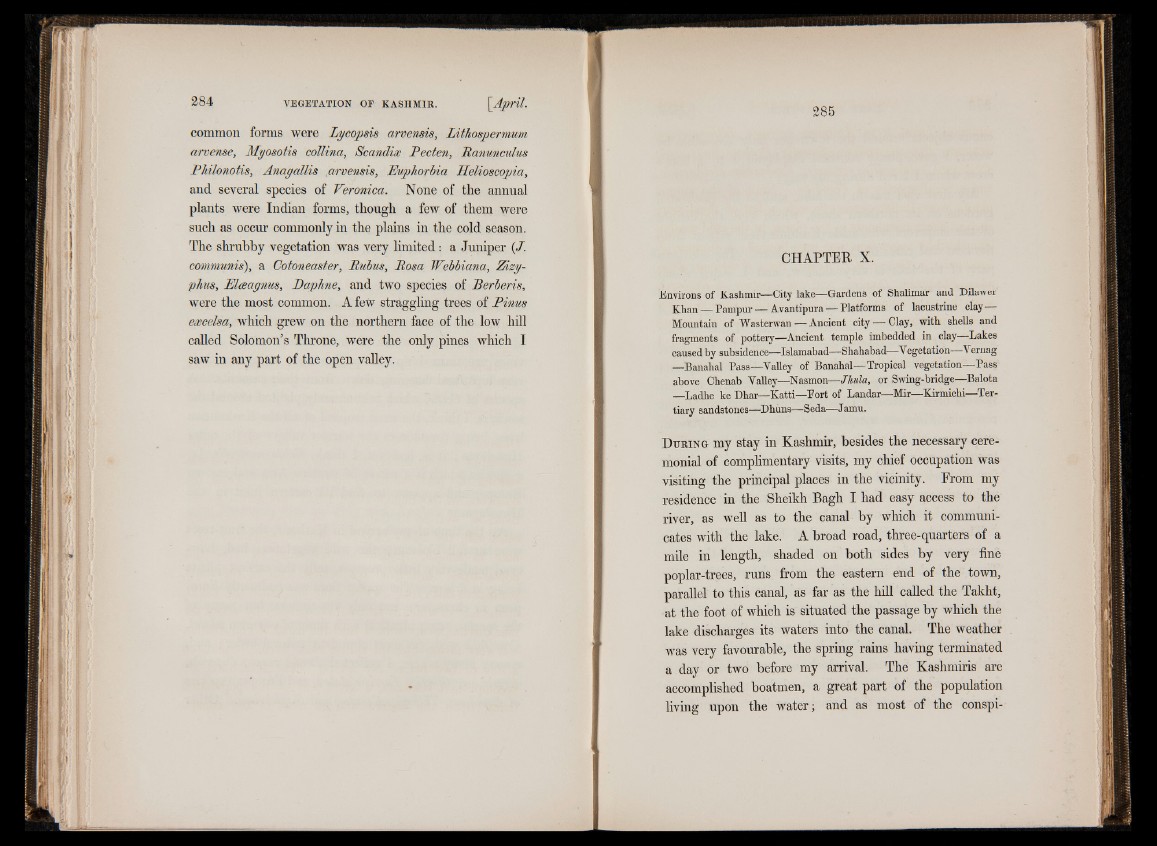
common forms were Ly cop sis arvensis, Lithospermum
arvense, Myosotis collina, Scandix Pecten, Ranunculus
Philonotis, Anayallis arvensis, Euphorbia Helioscopia,
and several species of Veronica. None of the annual
plants were Indian forms, though a few of them were
such as occur commonly in the plains in the cold season.
The shrubby vegetation was very limited: a Juniper (/.
communis), a Cotoneaster, Rubus, Rosa Webbiana, Zizy-
phus, Elceaynus, Daphne, and two species of Rerberis,
were the most common. A few straggling trees of Pinus
excelsa, which grew on the northern face of the low hill
called Solomon’s Throne, were the only pines which I
saw in any part of the open valley.
CHAPTER X.
Environs of Kashmir—City lake—Gardens of Shalimar and Dilawer
Khan — Pampur— Avantipura — Platforms of lacustrine clay
Mountain of Wasterwan— Ancient city — Clay, with shells and
fragments of pottery—Ancient temple imbedded in clay—Lakes
caused by subsidence—Islamabad—Shahabad—- Vegetation—Yernag
—Banahal Pass—Valley of Banahal—Tropical vegetation—Pass
above Chenab Valley—Nasmon—Jhula, or Swing-bridge—Balota
—Ladhe ke Dhar—Katti—Port of Landar—Mir—Kixmichi—Tertiary
sandstones—Dhuns—Seda—Jamu.
D u r in g my stay in Kashmir, besides the necessary c e r e monial
of complimentary visits, my chief occupation was
visiting the principal places in the vicinity. Erom my
residence in the Sheikh Bagh I had easy access to the
river, as well as to the canal by which it communicates
with the lake. A broad road, three-quarters of a
mile in length, shaded on both sides by very fine
poplar-trees, runs from the eastern end of the town,
parallel to this canal, as far as the hill called the Takht,
at the foot of which is situated the passage by which the
lake discharges its waters into the canal. The weather
was very favourable, the spring rains having terminated
a day or two before my arrival. The Kashmiris are
accomplished boatmen, a great part of the population
living upon the water; and as most of the conspi